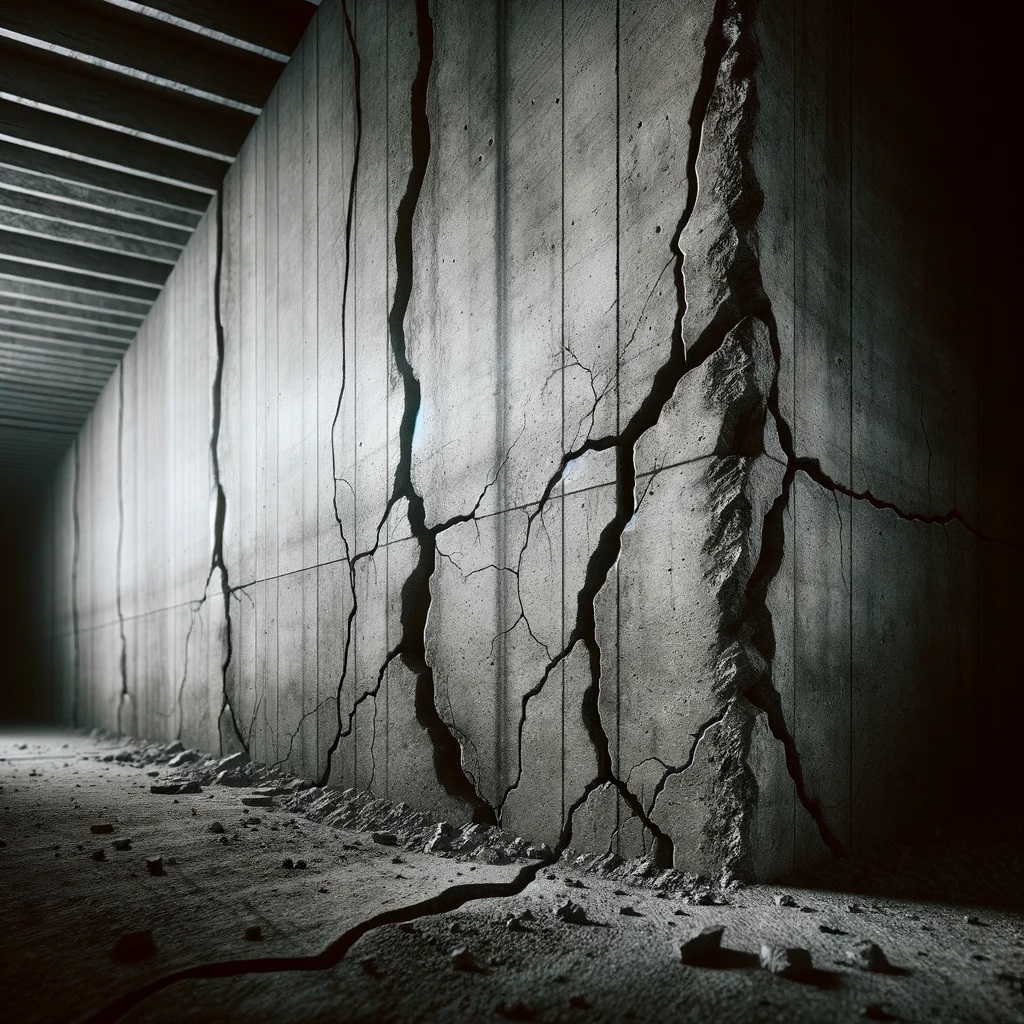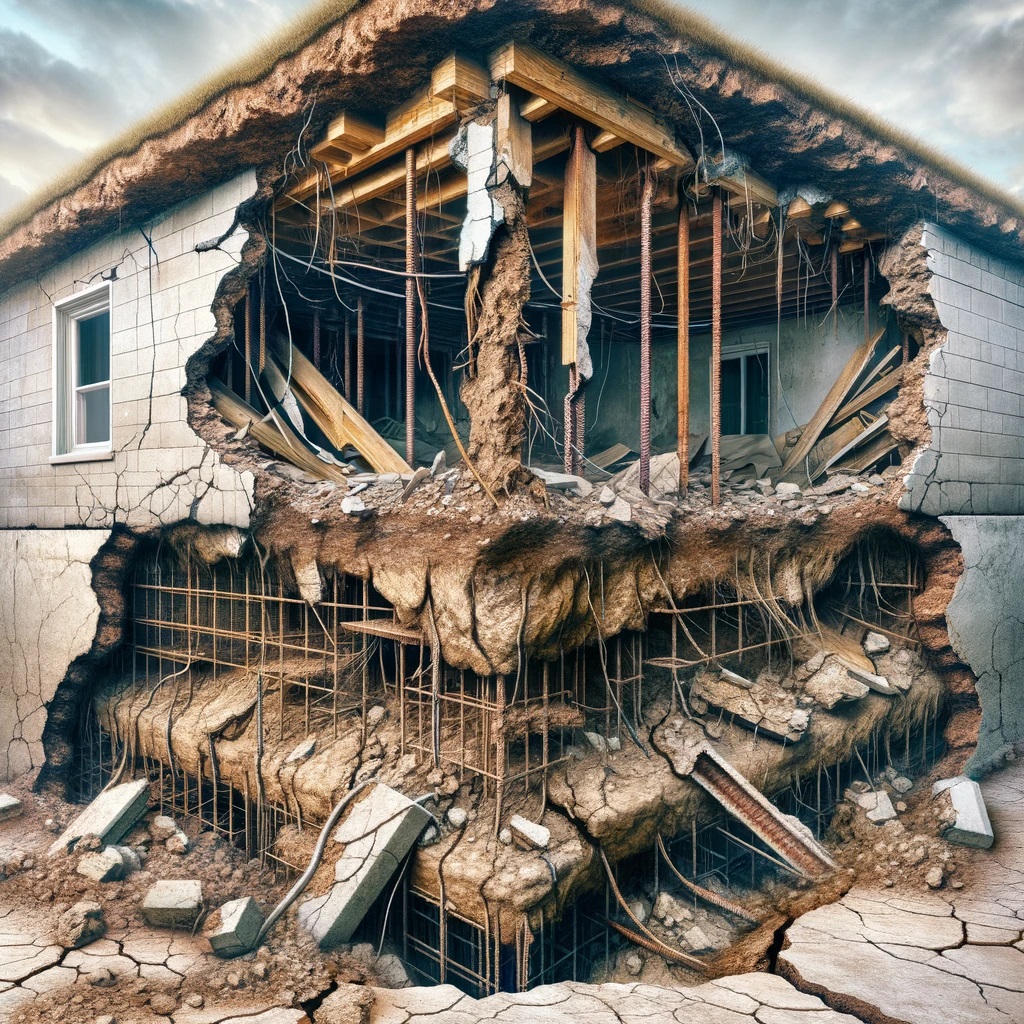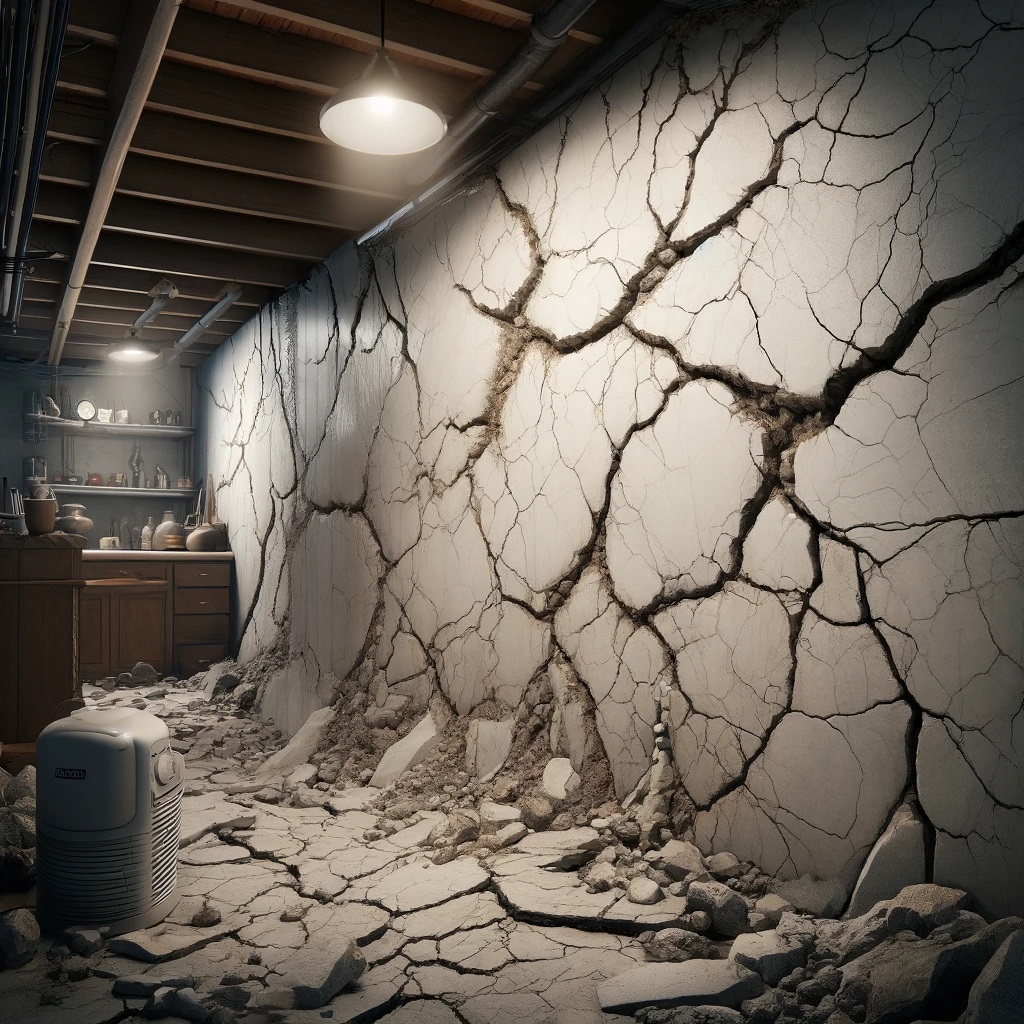Dealing with Horizontal Foundation Wall Cracks
Have you noticed horizontal wall cracks in your basement? You may be wondering what caused them and what you can do about them.
Causes of horizontal wall cracks
- Hydrostatic pressure
This is the pressure exerted by the water in the soil. This pressure increases in proportion to the volume of water in the soil and the depth of the surface. The pressure pushes against the wall and causes the formation of cracks. It may also cause the wall to bow inward. This pressure is known to build up, especially after a heavy downpour
- Increased loading above or next to the foundation wall
This may be caused by adding a building, driveway or packing soil on the ground near the foundation. The weight results in a force that is transferred through the soil and acts against the foundation wall. This can result in inward bowing of the foundation wall.
- Poor construction methods
Using the wrong materials or methods during construction can result in the foundation wall being too weak to support even normal loads. It c
Common repair methods
The most common repair methods for horizontal wall cracks include:
- Installation of helical piers
These piers are used to provide the basement wall with the extra support it needs. They are screwed into the soil until they reach bedrock. The foundation wall is then lowered onto the piers. The piers hold up the foundation wall to prevent settling.
- Installation of carbon fiber strips
These strips are also used to provide support for the foundation wall. They are installed on the interior surface of the wall. They are used to prevent further inward bowing of the wall by reinforcing it. They are, however, only effective if the exterior forces (in many cases hydrostatic pressure) are dealt with e.g. through the installation of a French drain.
- Installation of I-beams
These steel beams also provide additional support to the wall and prevent further inward bowing of the wall. They can also be used to help straighten the wall over time. This method of repair, however, is being widely replaced by carbon fiber strips.
- Installation of wall anchors
These are used to reinforce walls from the outside. The anchors include a plate that is installed on the wall, and another that is installed in the ground. The two anchors are tied together to provide support to the wall.

Jeff’s passion for basement waterproofing can be traced back to his early days at Everdry Waterproofing. He spent significant time working in every department not only to learn and improve but to help those who worked with him advance both personally and professionally.
Jeff has worked in the Waterproofing industry for 35 years, gaining experience in marketing, sales, service, and installations. As a seasoned basement waterproofing professional, he is passionate about advancing his knowledge in waterproofing and developing his team. In addition to basement waterproofing, he is also a board member for a non profit that educates and protects consumers against unethical business practices. Outside of the office, Jeff enjoys travel, music, and time with his wife of 36 years and his two sons.
Curious about the brains behind the great content here? It’s me, Jeff Schleuning, with 35+ years of expertise in the basement waterproofing industry and a rich history of owning a Basement Waterproofing franchise in Michigan.
My journey has equipped my team and I with invaluable insights, enabling to craft content that resonates with the audience using industry-leading online tools. Incorporating tools like SEMRush, Google Keyword Planner, AI technologies like ChatGPT, Claude-2, Google Bard, and Grammarly, we ensure the content is not just engaging but also strategically aligned with market trends.







